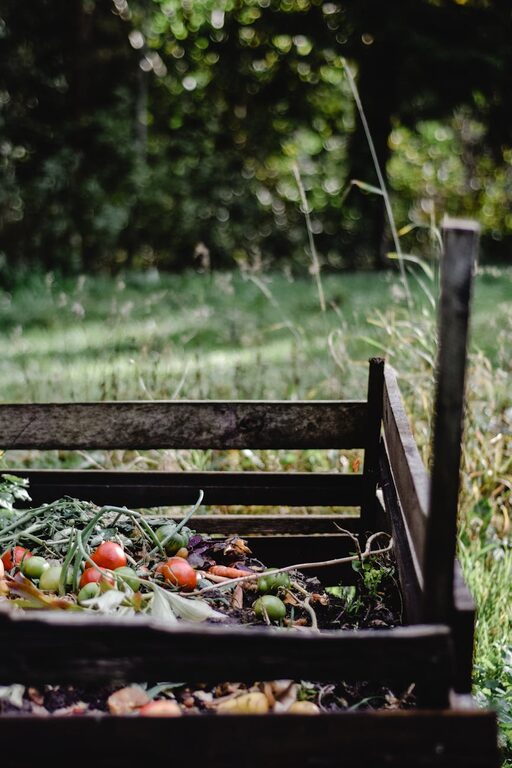Beginner Tips for Composting at Home: Start Your Eco-Friendly Journey

Composting is a simple yet powerful way to reduce waste and create rich soil for your garden. Whether you have a spacious backyard or a small balcony, starting a compost pile or bin at home can be a rewarding and eco-friendly project. If you’re new to composting, this guide will walk you through the basics and help you get started with confidence.
What is Composting?
Composting is the natural process of recycling organic material, like food scraps and yard waste, into a valuable soil conditioner called compost. This dark, crumbly material is packed with nutrients and helps improve soil structure, retain moisture, and support healthy plants.
Why Compost at Home?
– Reduce Waste: About 30% of household trash is compostable. Composting keeps this out of landfills.
– Save Money: By making your own compost, you reduce the need for store-bought fertilizers and soil amendments.
– Help the Environment: Composting lowers methane emissions from landfills and promotes sustainable gardening.
– Grow Healthier Plants: Compost enriches soil and encourages beneficial microorganisms.
Getting Started: What You Need
Choosing Your Composting Method
There are several ways to compost at home depending on your space and lifestyle:
– Backyard Pile: A simple heap of organic material in your garden.
– Compost Bin: A container designed to hold compost materials neatly.
– Tumbler: A rotating bin for faster composting through regular mixing.
– Vermicomposting: Using worms to break down food scraps, ideal for indoor or small spaces.
Equipment and Supplies
– Compost bin or designated spot in the yard
– Garden fork or shovel for turning the compost
– Kitchen container to collect food scraps
– Optional: thermometer to monitor temperature
What to Compost: The Basics
Greens and Browns
Successful composting requires a balance of carbon-rich “browns” and nitrogen-rich “greens.”
| Material Type | Examples |
|———————|————————————|
| Greens (Nitrogen) | Vegetable scraps, coffee grounds, fresh grass clippings, tea bags |
| Browns (Carbon) | Dry leaves, straw, cardboard, paper, wood chips |
Materials to Avoid
– Meat, dairy, and oily foods (attract pests and cause odors)
– Pet waste (may carry harmful pathogens)
– Diseased plants or weeds with seeds
– Treated wood or synthetic materials
Step-by-Step Composting Guide for Beginners
1. Select a Location
Choose a dry, shady spot near your garden or kitchen. Good drainage is essential.
2. Build Your Base Layer
Start with a layer of coarse browns like straw or small branches to help air flow.
3. Add Materials in Layers
Alternate between greens and browns. Aim for roughly 3 parts browns to 1 part greens for a balanced mix.
4. Keep It Moist
Your compost should feel like a damp sponge — moist but not soggy. Water if dry, or add more browns if too wet.
5. Turn Regularly
Aerate your compost by turning it with a shovel or pitchfork every 1–2 weeks to speed up decomposition.
6. Be Patient
Composting takes time. Depending on conditions, it can take 2–6 months to produce usable compost.
Tips for Successful Composting
– Chop or shred materials: Smaller pieces break down faster.
– Avoid strong odors: Balanced greens and browns help prevent smells.
– Maintain airflow: Turning and using coarse materials prevent compaction.
– Use a kitchen caddy: Having a small indoor bin encourages collecting scraps daily.
– Screen your finished compost: Use a sieve or mesh to separate fine compost from larger debris.
Troubleshooting Common Issues
| Problem | Cause | Solution |
|———————–|——————————-|———————————|
| Bad odor | Too much green or wet material | Add more brown, turn compost |
| Compost too dry | Not enough moisture | Water compost, add greens |
| Slow decomposition | Lack of airflow or nitrogen | Turn more often, add greens |
| Pests (rats, flies) | Food scraps like meat, oily food | Avoid these scraps, cover layers|
Using Your Finished Compost
When your compost looks dark, crumbly, and smells earthy, it’s ready! Use it by:
– Mixing into garden beds to improve soil
– Adding to potted plants for nutrition
– Mulching around shrubs and trees to retain moisture
Final Thoughts
Starting to compost at home is easier than you might think. By following these tips and keeping an eye on your compost pile, you’ll soon reduce your waste and nurture a thriving garden. Plus, it feels great to contribute positively to the environment one kitchen scrap at a time!
Happy composting!
